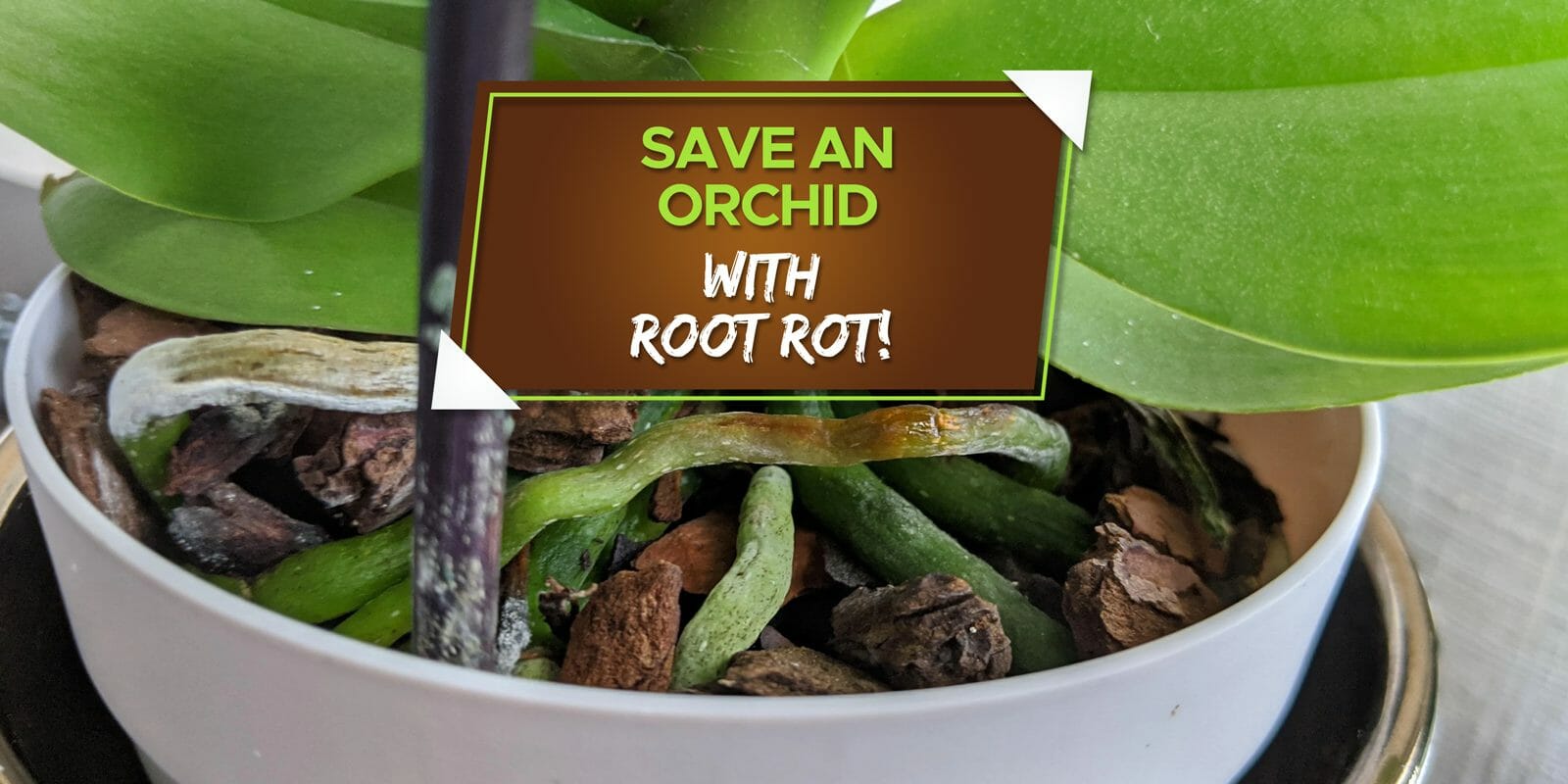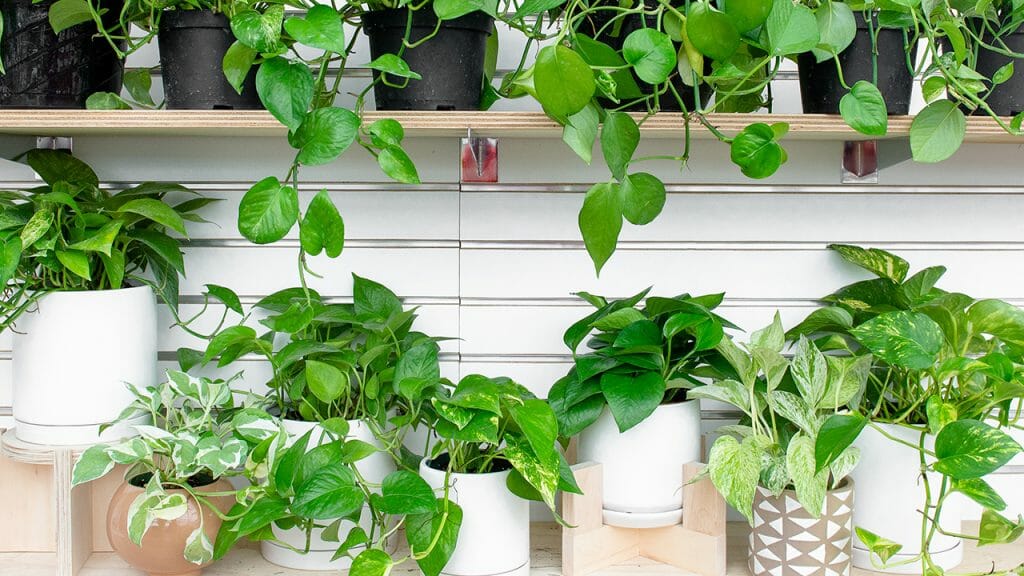
Orchids are beautiful and delicate plants, they add a touch of class to any home or garden. However, even with proper care, orchids can sometimes fall victim to root rot.
In my experience, root rot is the most common problem in orchids, and a variety of factors, such as over-watering, poor drainage, or a lack of proper care can cause it.
How to save an orchid with root rot? Remove the infected roots, repot the orchid in a pot with excellent drainage, and water it carefully from then on.
Fortunately, saving an orchid with root rot is possible if you catch it early enough. In this blog post, we’ll go over the signs of root rot, how to treat it, and how to prevent it from happening.
Signs of Root Rot in Orchids
The first step in saving an orchid with root rot is spotting the problem early on! Here are some common signs of root rot in orchids to look out for:
- Wilting or yellowing leaves: If your orchid’s leaves start to wilt or turn yellow, this could be a sign of root rot.
- Soft or mushy roots: Healthy orchid roots should be firm, white, or green. This could signify root rot if you notice that your orchid’s roots are soft or mushy.
- Black or brown roots: If you notice that your orchid’s roots have turned black or brown, this is a sure sign of root rot.
- Foul odor: If you notice a foul odor coming from your orchid, this could also be a sign of root rot.
- Poor overall health: If your orchid is not thriving and looks sickly, this could be a sign of root rot or another problem.
If you notice any of these signs, taking action as soon as possible is important to save your orchid.
Treating Root Rot in Orchids
If you think your orchid has root rot, the first step is to remove the infected roots. You’ll need a clean pair of scissors or knife, carefully cut away any black or brown roots. Be sure to sterilize your scissors or knife with rubbing alcohol before and after use to prevent the spread of infection.
Next, repot your orchid in a clean pot with fresh potting mix. Be sure to choose a pot that has good drainage to help prevent future root rot problems.
To improve drainage, you can also add some perlite or other drainage material to the potting mix.
After repotting, be sure to water your orchid carefully. Over-watering is 9 times out of 10 going to be the cause of root rot, so be sure only to water your orchid when the soil or potting mix you’ve used is dry, just lightly touch it.
You can also use a moisture meter to help determine when to water your orchid.

Preventing Root Rot in Orchids
Once you’ve treated your orchid for root rot, it’s essential to take steps to prevent the problem from happening again in the future. Some tips for preventing root rot in orchids include:
- Choose the right potting mix: Orchids need a well-draining mix to prevent root rot. Be sure to choose a mix specifically formulated for orchids and contains ingredients like bark, sphagnum moss, and perlite.
- Water properly: As mentioned above, over-watering is a common cause of root rot. Be sure to water your orchid when the potting mix is dry to the touch, and avoid letting the pot sit in standing water.
- Provide proper airflow: Good airflow prevents root rot in orchids. Be sure to place your orchid in a well-ventilated area and avoid overcrowding it with other plants.
- Avoid tap water: Tap water can contain chlorine and other minerals that can harm orchids. Instead, use distilled water or rainwater if possible.
- Avoid using a saucer under the pot: A saucer under the pot can hold excess water, leading to root rot. Instead, use a pot with drainage holes to allow excess water to drain away.
- Fertilize properly: Orchids need proper nutrients to stay healthy, but over-fertilizing can lead to root rot. I’d recommend a balanced fertilizer and always read the instructions on the label!
- Check for pests: Aphids and mealybugs can damage orchid roots and lead to root rot. Regularly check your orchids for pests and take action if necessary.
It’s super important to prevent root rot, I can’t stress that enough, it really can be damaging, and it’s not something that’s fixed easily.
DON’T MISS: Should you cut off dead orchid stems?
The Orchid Root Rot Secret Weapon, Cinammon!
There are quite a few options for you when trying to save your orchid, but my absolute favorite is using cinnamon! Cinnamon is an all-natural, antifungal agent that can be used to help prevent and/or treat your orchid.
Grind up some cinnamon in a spice grinder, then sprinkle the powder onto your orchid’s roots. You can also soak the roots in a cinnamon solution to evenly distribute the antifungal agent.
Orchid growers have used cinnamon for generations, and it’s still one of the most effective solutions to preventing and treating root rot in orchids.
It’s also a great way to make sure your orchid stays healthy and looks its best!
It’s important to note that cinnamon is meant to be used after the orchid has strengthened; using it on any weak roots might have an adverse effect.
Pot Your Orchids Properly
It’s crucial to pot your orchid in the right type of potting mix and use the proper size of the pot. Orchids need a well-draining potting mix to prevent root rot, such as one containing bark, sphagnum moss, and perlite.
Also, make sure to choose a pot with loads of drainage holes to allow any excess water to drain away easily; humidity and water are fantastic for an orchid, but sitting in water is no good for them.
Check out the video below, or click here to view it.
Frequently Asked Questions:
Should I cut rotten roots orchid?
Yes, if you suspect your orchid has root rot, removing any black or brown roots with a clean pair of scissors or knife is best. Make sure you sterilize your scissors before and after use to prevent the spread of infection.
How do I know if my orchid root is rotten?
The most obvious signs of root rot include yellowing or wilting leaves, a foul odor, and poor overall health.
Conclusion
So there you have it, root rot is a common problem in orchids, but saving an orchid with root rot is possible if you catch it early enough!
Following the steps outlined in this blog post, you can treat root rot, prevent it from happening again, and keep your orchids healthy and thriving.
With proper care, your orchids can continue to bring beauty and elegance to your home or garden for years to come.


